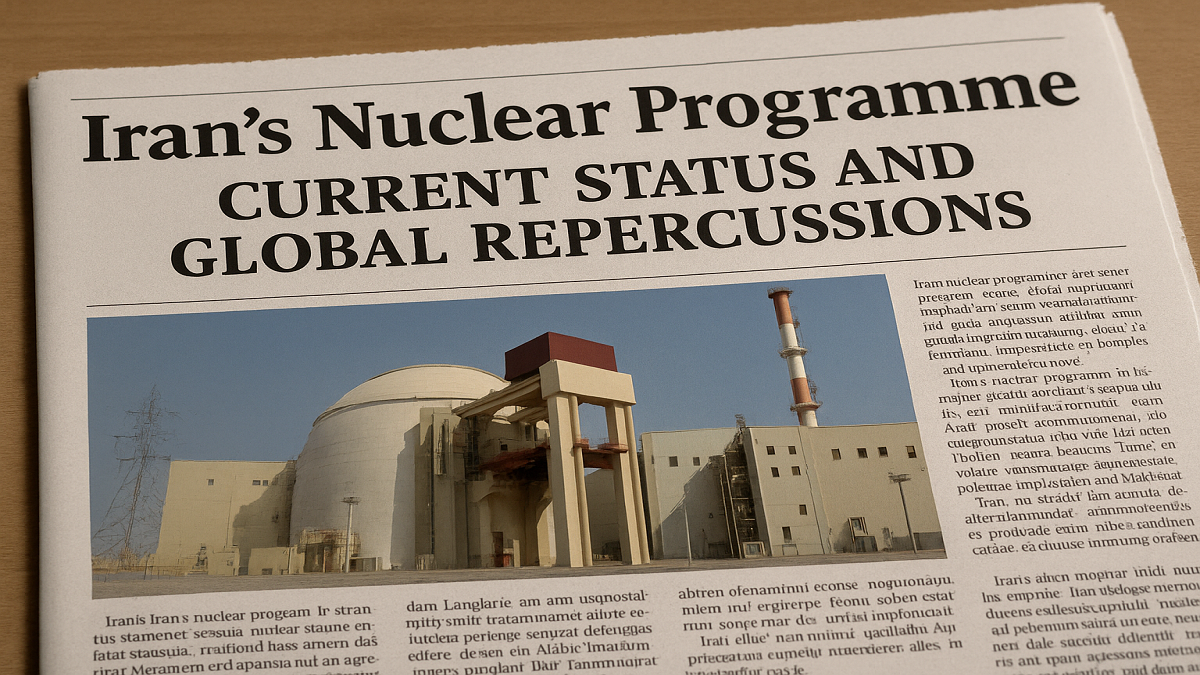On June 13, Israel announced it had initiated a series of strikes targeting “dozens of nuclear and military sites” across Iran. This move comes amid sensitive diplomatic engagements between Tehran and Washington, where the two sides were discussing possible limitations on Iran’s nuclear ambitions in exchange for sanctions relief.
This dramatic military escalation follows months of rising tensions and stark warnings from Tel Aviv. Earlier this year, Israeli officials made it clear they would not hesitate to strike Iran’s nuclear facilities if they felt the threat of weaponization was imminent—even without full U.S. backing.
Backdrop: U.S. Diplomacy vs. Military Threat
While U.S. President Donald Trump had emphasized diplomacy as the preferred path, he also warned that military action would be considered if negotiations failed. “If it requires military, we’re going to have military,” he had declared, noting that Israel would be the leader in any such campaign.
Following Israel’s airstrikes, explosions were reported across Tehran, and a senior Israeli military official confirmed that nuclear targets were hit. Meanwhile, U.S. Senator Marco Rubio warned Iran against retaliating against American interests, given the volatile environment.
UN Nuclear Watchdog Confirms Breach
Just a day earlier, on June 12, the Board of Governors of the International Atomic Energy Agency (IAEA) passed a resolution stating that Iran had breached the terms of a 1974 safeguards agreement. This marked the first formal censure since 2006, triggering global alarm about Tehran’s nuclear intentions.
Does Iran Have the Capability to Build Nuclear Weapons?
Some intelligence assessments estimate that Iran already possesses enough enriched uranium to potentially construct five to eight nuclear warheads—and could do so within months, if not sooner.
Key Technical Insights Into Iran’s Nuclear Programme
- Natural uranium contains only 0.7% of the U-235 isotope, the fissile material needed for nuclear weapons. The remaining 99.3% is U-238, which is not suitable for weapons use.
- To be used in weapons, uranium must be enriched to 90% or more U-235, becoming weapons-grade uranium. This process is carried out using machines called centrifuges, which are measured in separative work units (SWUs).
- By 2006, Iran had reached 3.5% enrichment. By 2010, the IAEA reported 19.75% enriched uranium at the Natanz Fuel Enrichment Plant, and later at Fordow.
- Under the 2015 Joint Comprehensive Plan of Action (JCPOA), Iran agreed to:
- Limit enrichment to 3.67%,
- Reduce the number of centrifuges,
- Cap its stockpile of low-enriched uranium to 300 kg, in exchange for sanctions relief.
- After President Trump withdrew the U.S. from the JCPOA in 2018, Iran resumed and intensified enrichment, reaching levels of up to 60%.
- The enrichment jump from 60% to 90% requires far fewer SWUs than from 0.7% to 60%, meaning Iran could weaponize uranium within weeks using existing resources.
- Hui Zhang, a scholar at Harvard’s Belfer Center, has stated that Iran may be able to reduce the time between producing weapons-grade uranium gas and assembling a functional nuclear weapon to “probably less than three weeks.”
Iran’s Capabilities and Strategic Calculations
Iran has consistently claimed its nuclear programme is peaceful and designed for energy and medical purposes. However, its steady increase in enrichment levels and refusal to fully cooperate with IAEA inspections have raised deep concerns in the West and among regional rivals.
Israel’s Nuclear Policy: Ambiguous Yet Armed
Israel, widely believed to be a nuclear power, has never officially confirmed nor denied its arsenal. It is not a signatory to the 1968 Nuclear Non-Proliferation Treaty (NPT) and is believed to possess both nuclear warheads and delivery systems, including long-range missiles and submarine-launched platforms.
Its strategic posture is based on deterrence, and any perception of a nuclear-armed Iran is considered unacceptable by its military and political leadership.



 Putin Receives Grand Ceremonial Welcome ...
Putin Receives Grand Ceremonial Welcome ...
 Meet the World's Youngest Self-Made Woma...
Meet the World's Youngest Self-Made Woma...
 Sudan Approved an Agreement Allowing Rus...
Sudan Approved an Agreement Allowing Rus...







